Y3. Lesson 8. The Brass Family
Prior learning: None
Duration: 30 minutes
Materials: Recorders
Keywords: Beat, rhythm, singing, chanting, partners, rhymes, circle games.
Difficulty: ![]()
Prepare
High do
Present
The Brass Family
Practise
Dotted minim

The brass family of the orchestra is renowned for its powerful and majestic sounds, characterised by instruments made primarily of brass. Members include the trumpet, horn, trombone, and tuba, each producing sound through the vibration of the player's lips against a mouthpiece. These instruments are versatile and capable of a wide range of dynamics and timbres, from the brilliant and piercing to the deep and sonorous. They play crucial roles in both harmonic foundation and melodic lines within orchestral compositions.
 Melodic development
Melodic development
![]() Students discover a new classroom song.
Students discover a new classroom song.
- The learning objective of this song is to unconsciously introduce students to high do (an octave jump from do)
- Teach the class to sing the song using a measured cadence, two measures at a time, until secure.
- Ask where the highest-sounding note is to be found [on the word 'Oh']
 Rhythmic development
Rhythmic development
![]() Students investigate the length of various notes on the audio player.
Students investigate the length of various notes on the audio player.
- Explain that students will hear a French horn play a note.
- Students must listen carefully and answer how many beats each note lasts for.
- They must also name the note length.

 Creative movement
Creative movement
![]() Students have fun in this treasure hunt game!
Students have fun in this treasure hunt game!

Variations:
Team Play: Divide students into teams. Each team has to collect a certain colour or type of treasure.
Challenges: Include simple challenges to reach a treasure at certain points, like hopping on one foot or crawling.
Musical Pauses: Occasionally pause the music. When the music stops, students must freeze in place until it starts again.
Objective: To find and collect hidden treasures before the music's tempo reaches its fastest point.
Setup:
- Preparation: Before the game starts, hide small items (treasures) around the play area. These can be simple objects like coloured balls, small toys, or themed items.
- Starting Point: All students start at a designated "home base" area.
Rules:
- Treasure Hunt: When the music starts, students leave the home base to search for the hidden treasures.
- Music Tempo: As the music starts slow and gradually gets faster, students should initially walk to find the treasures. As the tempo increases, they can speed up to a fast walk or a gentle jog.
- Collection: Each student can only collect one treasure at a time and must return it to the home base before looking for another.
- Ending: The game ends when the music reaches its climax or when all treasures are found, whichever comes first.
- Safety: Ensure students understand how to move safely, avoiding running into each other, especially as the music speeds up.
 Listening
Listening
![]() Students listen to the sound of individual brass instruments.
Students listen to the sound of individual brass instruments.
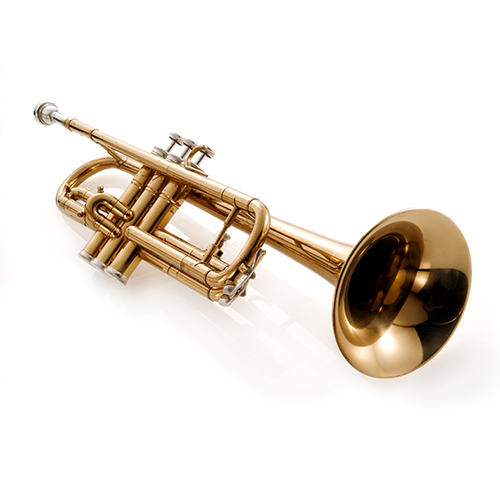
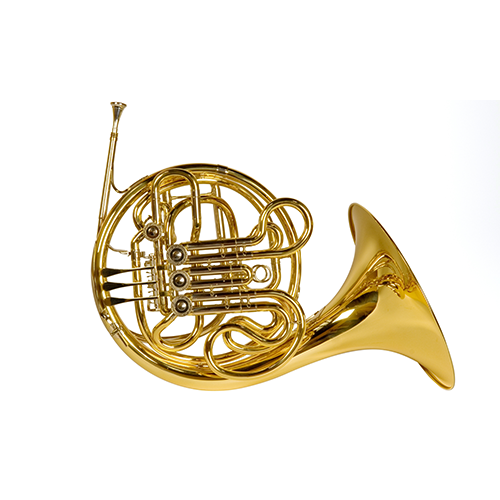
The trumpet is a shiny, brass musical instrument with a clear, bright sound. It has three buttons, called valves, which the player presses to change the notes. To play it, you buzz your lips into a small mouthpiece. This makes the air vibrate inside the trumpet, creating sounds. Trumpets are used in many types of music, like jazz, classical, and marching bands. They can play happy, fast tunes or slow, sad melodies. Trumpet players need good breath control and strong lips to play different notes. It's fun to listen to and even more fun to play!
The French horn is a beautiful, shiny brass instrument with a warm, deep sound. It has a long, coiled tube and a wide bell at the end. You play it by buzzing your lips into a mouthpiece. It also has several valves, which you press with your fingers to change notes. The French horn can play both high and low tunes, making it very versatile. It's often heard in orchestras, creating rich, mellow sounds that can be both exciting and soothing. Playing the French horn takes practice, especially to hold it correctly and to control your breath, but it's very rewarding!
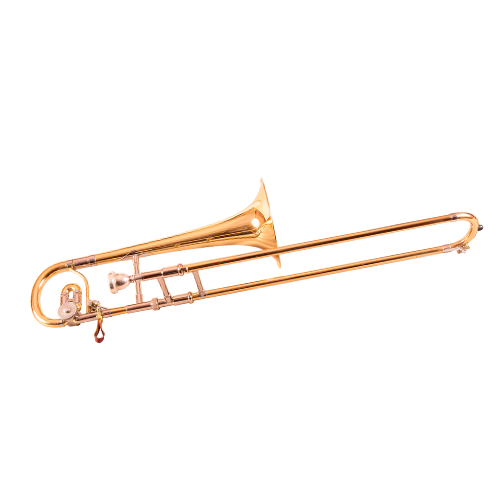
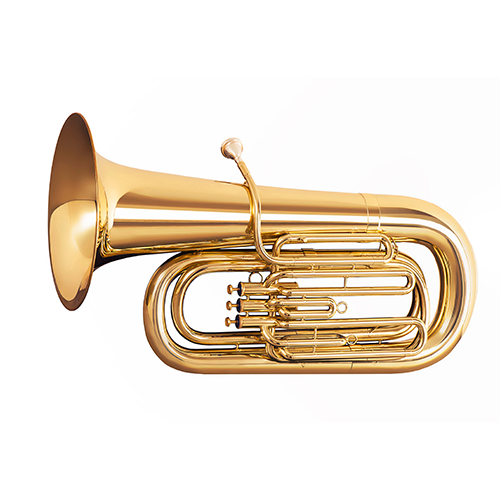
The trombone is a unique and fun brass instrument known for its sliding tube, which makes it look cool! Instead of valves like a trumpet, it has a long slide that the player moves in and out to change the notes. This sliding action allows the trombone to make a wide range of sounds, from deep, powerful notes to higher, cheerful ones. To play, you buzz your lips into the mouthpiece and use your breath to create music. Trombones are often heard in jazz bands, orchestras, and marching bands. They can play smooth, sliding melodies or quick, lively tunes. Playing the trombone can be a bit tricky at first, especially moving the slide to the right spot, but it's a lot of fun and sounds great!
The tuba is the largest and one of the lowest-sounding instruments in the brass family, known for its deep, rich sounds. It's quite big and often rests on the player's lap or is carried with a strap. The tuba has a large, round body with a big, flared bell that points upwards. It also has valves, like buttons, that the player presses to change notes. To play the tuba, you buzz your lips into a much larger mouthpiece than other brass instruments, using a lot of air. Tubas are important in bands and orchestras, providing a strong bass foundation. They can play slow, powerful tunes or faster, fun rhythms. Learning to play the tuba can be challenging because of its size and the need for strong breath, but it's very rewarding and makes a grand sound!
 Visual learning
Visual learning
![]() Students discover what each of the brass family instruments looks like.
Students discover what each of the brass family instruments looks like.
- Project the graphics.
- Ask students what these four instruments are.
- Explain that the first instrument is called a trumpet and has the highest sound of the four.
- Next is the French horn, with a lower sound than the trumpet.
- The trombone sounds lower than the French horn and the tuba has the lowest sound of all.
- Teach that these four instruments are part of the brass family in an orchestra.
- Ask if students know why they are different sizes.
- Discuss if the size of the instrument would make a difference to the sound.
- Which instrument has the highest sound?
- Which instrument has the lowest sound?
- Ask what material each instrument is made from.
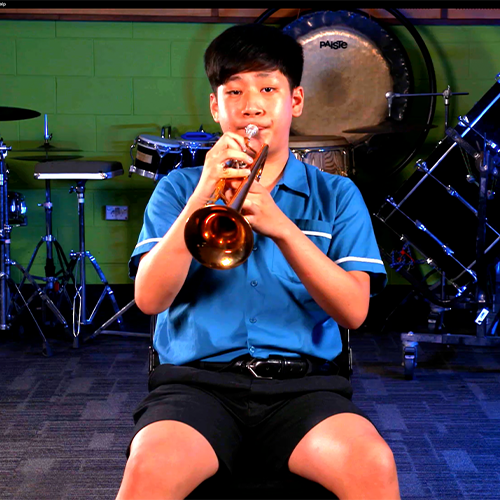
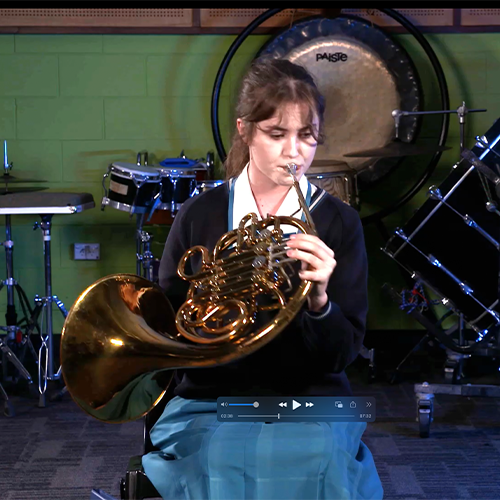
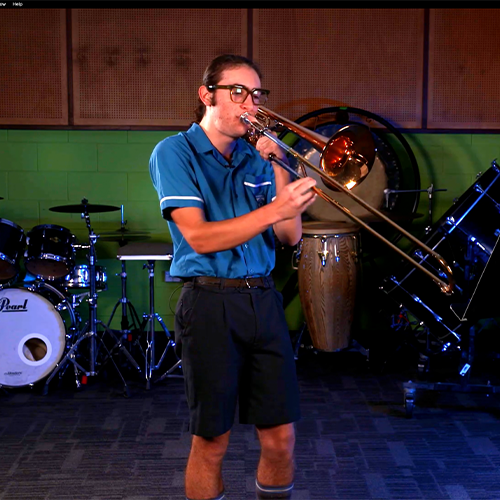
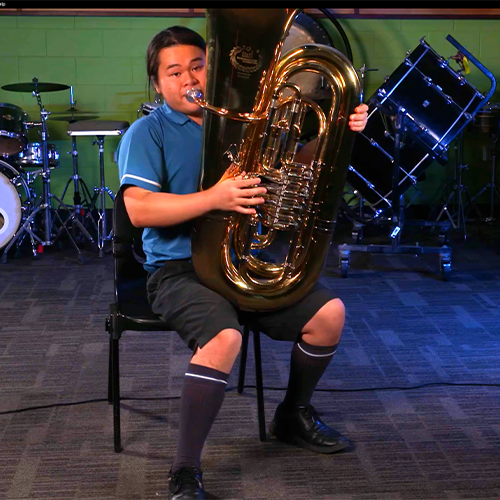
 Instruments
Instruments
![]() Students continue developing their playing skills with this new song.
Students continue developing their playing skills with this new song.
- Students should now be more familiar with correctly holding their instrument and should be able to play the notes BAG from sight.
- Instruct students to play the song Up & down.
- Remind them to take a breath at the end of every measure and to count 1, 2, 3, 4 in their heads as they play.
- Monitor for good sound production and holding technique, offering gentle guidance where required.
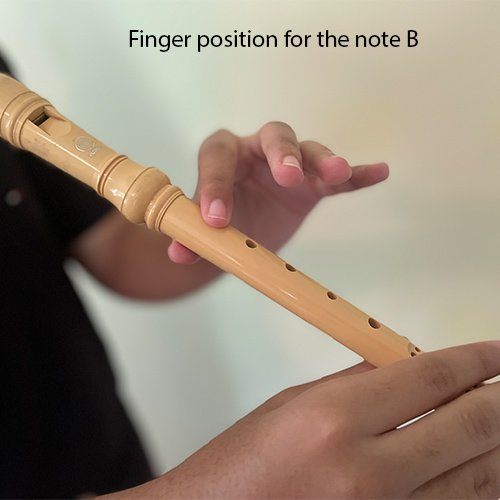
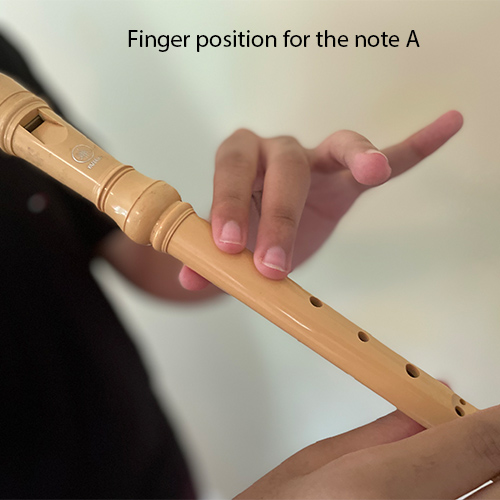
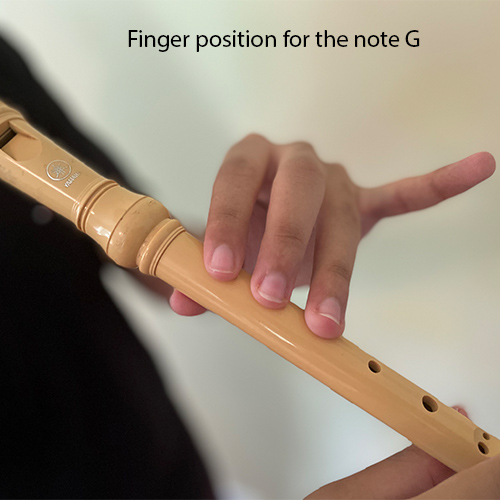
 Part work
Part work
![]() Students revise conducting in quadruple metres as they sing a known song.
Students revise conducting in quadruple metres as they sing a known song.
- Instruct students that they will sing a known classroom song and will conduct it at the same time.
- A suitable example in 2 metre might be A Tisket, A Tasket, or Apple Tree.
- Remind students how to conduct in 2 metre and have them practise.
- When secure, lead the class in singing the chosen song and conduct with their dominant hand.
 Assess
Assess
Suggested lessons
Y1. Beat II

Y1. Beat III

Y1. Beat IV

